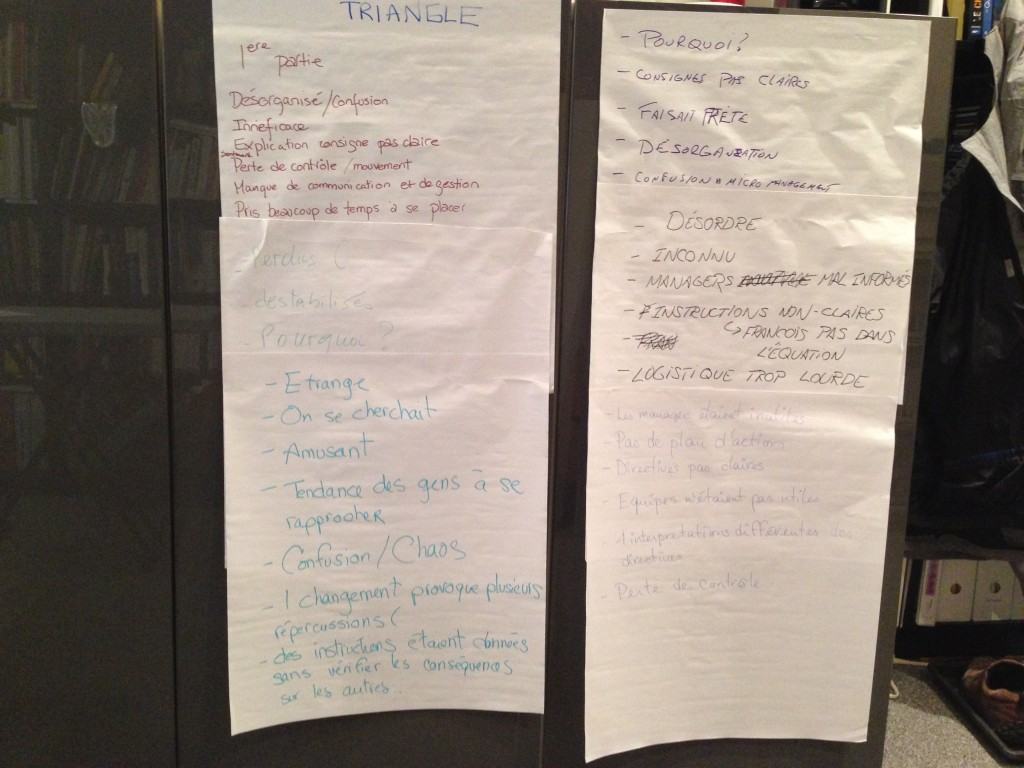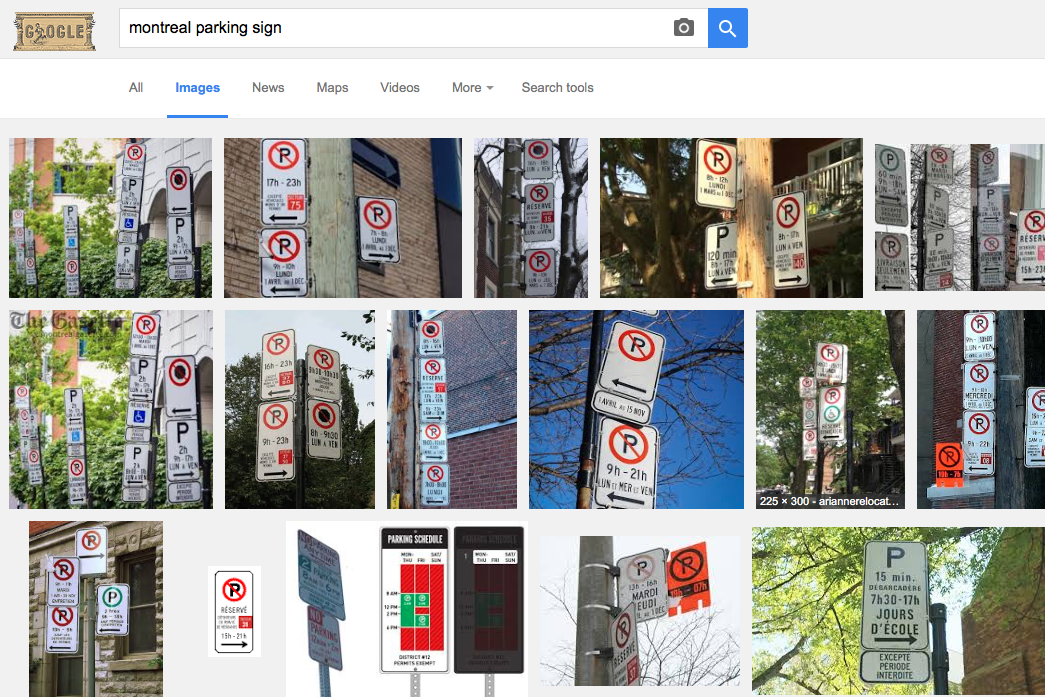Recap of last week post:
Our participants are outdoors under an unacceptable low temperature … without coats. The previous exercise lasted more than 4 minutes.
Remember: they were shivering during the cool winter, end of the winter, with their coats during the previous exercise and we left them very slightly clad …..
But, as docile employees, they all accepted these inhuman conditions, because after all, their leader is a trustworthy man ….And there must be a reason to do this crazy exercise !!!
Once the group is out, the signal is launched: make equilateral triangles. Without managers. Will they be able to do better?
[pexvimeo pex_attr_src=”https://vimeo.com/122785390″ pex_attr_width=”800″][/pexvimeo]
Execution’s time: 27 seconds.
In the calm.
Without confusion.
End of the exercise, successful this time!
A brief reflection exercise on both parts of the exercise (flip-chart type posters) generated the following comments:
Confusion!
Chaos!
Disorganized!
WHY?
Lack of communication and planning!
Instructions not clear!
Micromanagement!
And my favorite ….
Managers are useless!
A lot of blame for management!
Why did they not plan adequately? Why did they not ask for better information? Why did not we explain? Why did not we let it happen?
The managers were useless …
… except maybe the one who quickly explained to his team what they had to do by ending with … “You know what you have to do, I do not have to tell you how … go!”
And this one succeeded quickly, without stress and did not intervene later. Oh yeah, and he had a lot of fun watching the others.
Some conclusions of the first exercise:
Conclusions that I draw …
Instructions not clear?
Why did he not consult his colleagues?
Competitive spirit ?
Yet, the fact that people were connected to other teams was very obvious ….
No planning …
No communication between managers
AH yes … we see it from time to time…
A team finished well before the others …
What if we help each other?
Oh yes, the uncontrollable egos …
The “employees” waiting to be placed.
We wait for the instructions of the “boss” …
Even when the four managers came to meet me, disrupting the triangles already in place!
And personal initiative in all this? And the demand for information for those who wondered “why?”. Do not forget that Generation Y is the “Why” generation!
Why have you waited until you come up with a solution?
And self-regulation?
Ah.
One of the managers understood. Beyond the simple delegation of tasks, self-regulation implies a “let go” approach and a clarification of the role of each. Not only a description of tasks, but a definition of the place of each in the company and in the overall vision of what needs to be accomplished.
Each employee quickly realizes the purpose of activities IF vision is clear.
One of the five disciplines of Peter Senge is Shared Vision!
Attention, not the imposed vision, the one that appears on the posters all over the walls of the company.
Another is team spirit.
A third discipline talks about talent development and skills mastery.
The last two disciples of Senge bring us to the heart of the problem demonstrated by this exercise:
Mental models and systemic vision.
Mental models … to be redefined at the beginning of the 21st century! Indeed, the position of the boss as a great autocratic leader can only lead to a schism and a loss of performance. The role of everyone is to take his rightful place. This will require a new definition of roles … and a profound paradigm shift in our organizational structure concepts. The hierarchy will have to transform to take into account the multiple interactions between people, between services, between companies and through social networks that are not ready to disappear.
Interactions!
Self-regulation
The basis of this systemic vision.
The exercise of the triangles stimulated the vision of the entire system even though the incumbent managers were exhausted after trying to manage their team. They didn’t achieve their goal. The systemic vision prompts us to rethink all of our activities.
This systemic vision is more natural and intuitive than the hierarchical vision that paralyzes our organizations.
The bad news: our organizations and their management well-anchored in Taylorism feel slightly threatened by this new mental model.
The good news is that our employees are increasingly ready to stem this vision and contribute to the Company’s performance.
The exercise demonstrates it eloquently: More than 4 minutes with the management team and less than 30 seconds through self-regulation. An 800% improvement without any conscious effort to establish Kaizen, 5S or other “Lean” tools.
Clear vision. A voluntary contribution. And hop … no need to think about putting on a coat since we will not have time to be cold …
Next challenge please?
The magic of co-operation then takes place.
Peter Senge talks about systemic vision.
Clay Shirky talks about cognitive surplus.
Jon Husband talks about wirearchy.
Neils Pflaeging mentions organizational physics.
I call it organizational biology because the parallels with a living cell interacting with its environment are so similar and obvious to me.
Magical interactions have nothing magical about them.
Interactions are natural and organic in an intelligent organization.
Our role is to facilitate them. This will become the only way to manage the complexity of our organizations. This complexity results in part from the globalization of markets but also from the inherent complexity of the human being.
Facilitate interactions.
Let the “command & control” mode set up by Frederick Taylor at the beginning of the last century. Be an agent of change to make your organization intelligent.
And let people plan their vacation … together!
© Copyrighted material Aliter Concept™ 2017. Please do not print or copy without permission from the author.
BUT DO SHARE IT using the social network buttons !!





